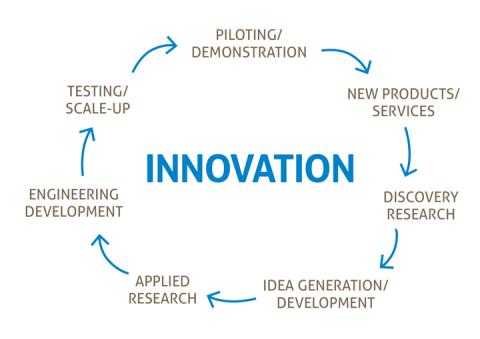Inside SRC
Discovery and invention strategies are important aspects of research and development. Once something has been invented, questions related to feasibility, value and demand come into play, as well as whether or how the invention should be protected.
Canada has an opportunity to become a business innovation leader by supporting and better connecting its existing innovation ecosystem.
SRC has developed an economic and socio-environmental impact audit process that enables an RTO to use solid data to provide a realistic indication of the impacts of its innovation-enabling work.
“Do you happen to have a gently used biodigester?” Our biodigester project with the Canadian Museum of Science and Technology started with an unusual question. Isn't that where innovation usually starts?
Canada’s principal innovation enablers are its Research and Technology Organizations (RTOs). What? Canada has RTOs? You bet. So who are they?
Research and Technology Organizations (RTOs) help industry get innovation done, and they normally get paid by industry, so why do RTOs need government support as well?
When it comes to how to get innovation done, and how to get through the Valley of Death, such discussions usually lead to questions about Research and Technology Organizations (RTOs).
Discussions of how innovation actually gets done inevitably lead to discussions about the “Valley of Death.” So what is the Valley of Death?
The path to any particular innovation can start almost anywhere - a new idea, trial and error or a solution to a specific problem or opportunity.
This may sound like heresy, but research and technology organizations (RTOs), universities, colleges, and even private-sector research and engineering companies seldom literally “do” innovation.










